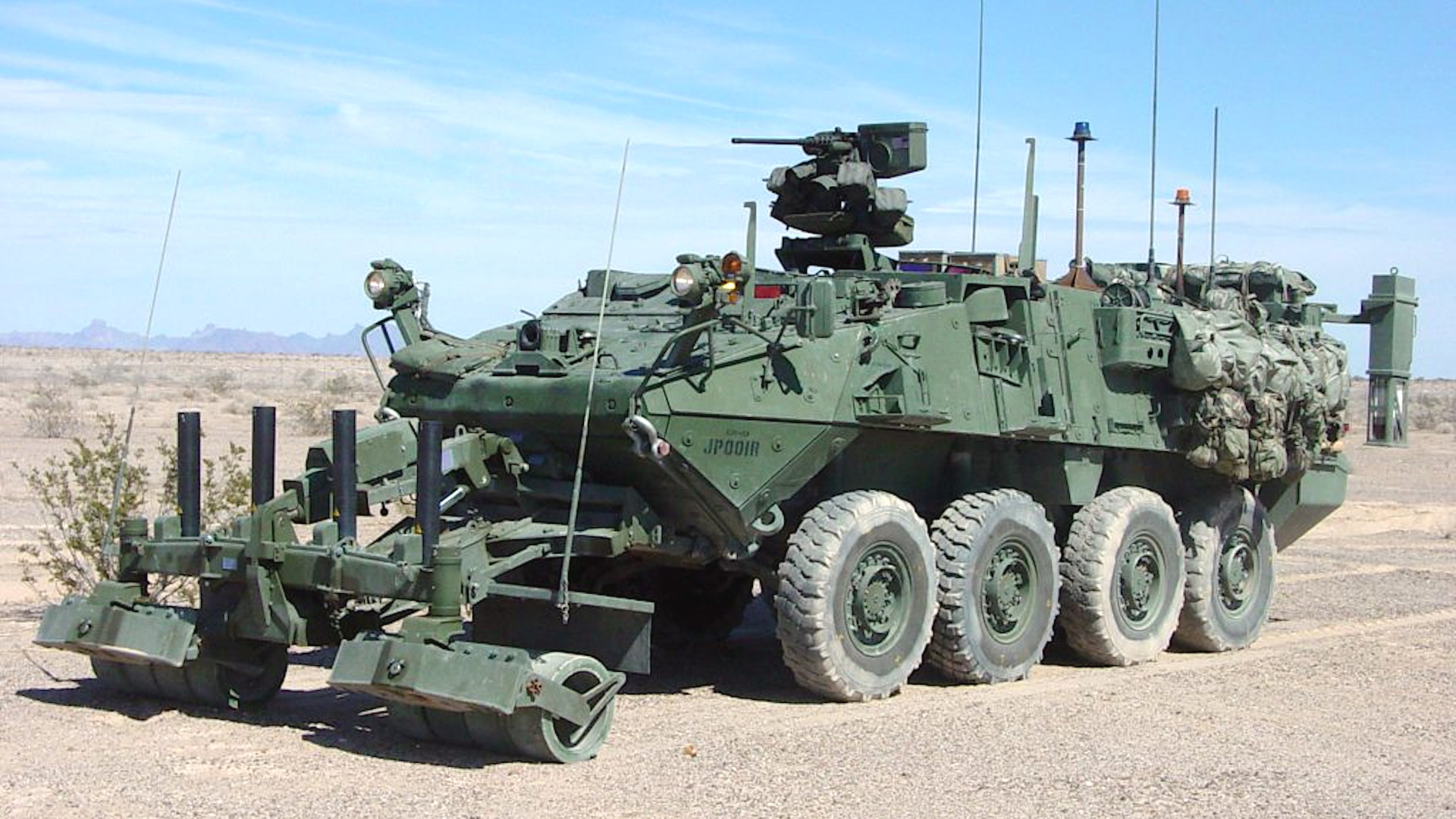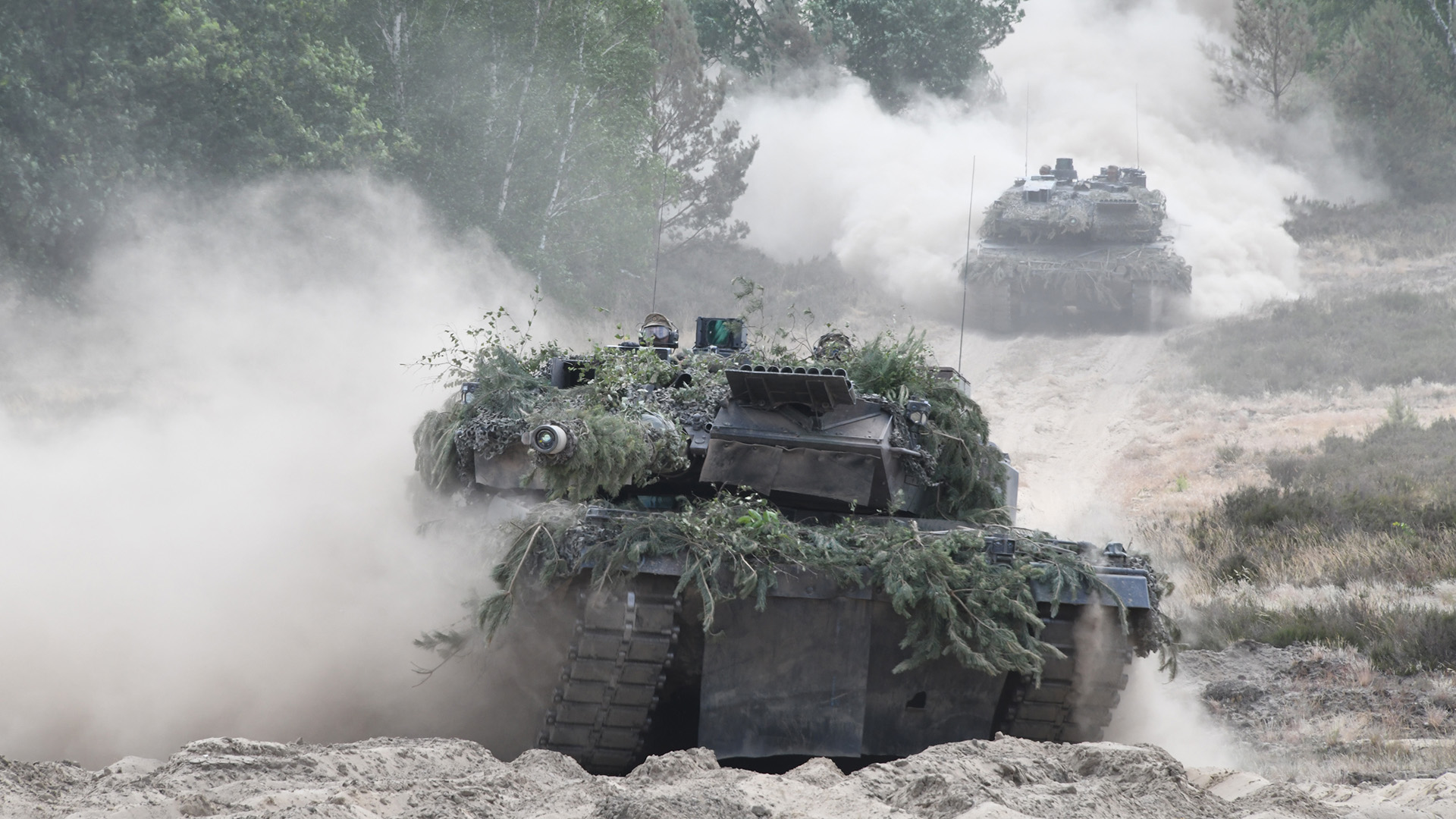Despite another plea this morning from Ukrainian President Volodymyr Zelensky for additional western tanks, the eighth meeting of the Ukraine Defense Contact Group wrapped up at Ramstein Air Base in Germany with that request unfulfilled.
While several of the 50 member nations of that group came forward with new donations of armored vehicles and air defense capabilities, there were no tanks on the list.

Neither the U.S. nor Germany have yet decided to provide tanks from their own supplies. NATO allies, who have thousands of German-made Leopard 2 tanks, did not agree during this meeting to provide any to Ukraine, despite earlier indications that such a decision was likely.
“I think you may have heard the German Minister of Defense say earlier that they’ve not made a decision on the provision of Leopard tanks,” U.S. Defense Secretary Lloyd Austin told reporters after the meeting wrapped. “What we’re really focused on is making sure that Ukraine has the capability that it needs to be successful right now.”
Austin tried to deflect concerns about the Leopard tanks, saying “this isn’t really about one single platform. And so our goal … is to provide the capability that Ukraine needs to be successful in the near term.”
Still, Austin said that “there are tanks” among the combat capabilities allies have discussed.
“Poland, for example, continues to offer tanks and will provide tanks and other countries will offer some tank capability as well,” he said. “I don’t have any announcements to make on the M-1 [Abrams main battle tank]. And you heard the German Minister of Defense say that they’ve not made a decision on the Leopards.”
The holdup, as we previously reported, has been the reluctance of Germany – which holds the export licenses to the Leopard tanks – to allow them to be shipped to Ukraine until and unless the U.S. first sends M-1 Abrams tanks. Though that requirement may no longer be in play, any nation with Leopards they want to send to Ukraine still needs Germany’s blessing first. And that has yet to be offered.
Earlier Friday morning, new German Defense Minister Boris Pistorius denied to reporters that Berlin was blocking efforts to provide those tanks to Ukraine, according to Der Spiegel.
Pistorius announced that Germany would check its stocks of Leopard tanks for possible delivery to Ukraine, though it is puzzling that this information would not be readily available, especially pertaining to what could be sent to Ukraine and exactly what it would take to do so. This has been a headline topic for weeks now, and the question of sending western tanks to Ukraine, in general, has been an issue for many months.
“There are good reasons for the delivery, there are good reasons against it,” he said.
There is “no uniform opinion” among the partners, said Pistorius, but the impression that Germany is blocking such a decision is wrong, according to Der Spiegel.
That decision will be “made as soon as possible” in coordination with the partners.
During his press conference Friday morning, Austin denied there was any linkage between Germany’s decision on Leopards and any U.S. decision on M-1 tanks, which would “unlock” Berlin’s flow of tanks.
“I think you heard the German Minister of Defense say earlier today that there’s no linkage between providing M-1s and providing Leopards I think he was pretty clear about that,” said Austin. “So this notion of unlocking – you know in my mind is not [that] that’s not an issue and more importantly, in his mind as well.”
Regardless of Germany’s decision, Poland said it might send Leopards to Ukraine.
Poland could send Leopard 2 tanks to Ukraine even without Germany’s re-export approval, a Deputy Foreign Minister said on Friday, ahead of the meeting, according to Reuters.
“I do not rule out that we are ready to take such a step,” Pawel Jablonski told private radio RMF FM referring to the possibility of sending tanks to Ukraine even if Germany opposes it, Reuters reported.
Allies have debated the issue of providing Western tanks to Ukraine for months, but the concept became a reality last week when the U.K. announced it will provide Challenger 2 tanks. And on Thursday, a group of NATO nations, meeting in Estonia, issued what it called the “Tallinn Pledge,” calling for Ukraine to receive modern tanks, among many other weapons.
Poland said it “is ready to donate a company of Leopard 2 tanks with 1,000 pieces of ammunition. Pending this, a wider coalition of Leopard 2 tanks donors will be established.”
Slovakia also said it would consider sending tanks as part of that effort.
There is no shortage of those weapons in Europe. A dozen European nations have more than 2,300 Leopard 2 tanks in their stocks, according to the International Institute for Strategic Studies. The Leopard is at the heart of this debate.
There were no tanks on the latest list of weapons the U.S. will send to Ukraine, released Thursday afternoon. You can read the details of that $2.5 billion package – which includes 90 8×8 Stryker wheeled armored vehicles – here.

But despite the lack of tanks announced today, Army Gen. Mark Milley, Chairman of the Joint Chiefs of Staff, told reporters there is plenty of firepower for Ukraine to go on the offensive against Russia.
“This package, combined with our previous ones, includes combined arms maneuver capabilities with supporting artillery, equivalent to at least two combined arms maneuver brigades or six mech infantry battalions, 10 motorized infantry battalions and four artillery battalions along with a lot of other equipment,” he said. “This U.S. package, along with the Allied donations that are indicated today, signifies our collective resolve and our commitment to Ukraine to protect their population from the indiscriminate Russian attacks and to provide the armor necessary to on the offensive.”
The front lines in Ukraine are huge, Milley said, likening them to the distance “from Washington, D.C., to Atlanta.”
“So that is a significant amount of territory, and in that territory, are still remaining a lot of Russian forces in Russian occupied Ukraine,” he said. “So from a military standpoint, I still maintain that this year it would be very, very difficult to militarily eject the Russian forces from every inch of Russian-occupied Ukraine. That doesn’t mean it can’t happen, doesn’t mean it won’t happen, but it’d be very, very difficult.”
Given the amount of equipment the U.S. and allies have committed, along with training, Milley said “it’s very, very possible to for the Ukrainians to run a significant tactical or even operational level offensive operation to liberate as much Ukrainian territory as possible.”
Leopard 2 tanks aren’t the only ones being considered for Ukraine. A French official in Washington, D.C., told The War Zone Thursday night that Paris is examining the request for Leclerc main battle tanks at the National Assembly. Each possible transfer is examined by the French government along three criteria, as is always the case when France considers these issues. First is that the equipment needs to be used for defensive purposes. Second is that the transfer does not weaken France’s defensive systems. And third is that the equipment can be maintained in operational condition.
Allies have already agreed to provide Ukraine with a mix of armor.
Thursday, Sweden agreed to send Ukraine advanced CV90 series IFVs, the standout item in Sweden’s new package of military aid to Ukraine, announced by the government in Stockholm. The CV90 joins a large number of other armor vehicles promised to Ukraine, including FV432 Mk 3 Bulldog tracked armored personnel carriers from the U.K., 109 M2A2-ODS Bradley Fighting Vehicles and the aforementioned 90 Stryker eight-wheeled armored vehicles from the U.S., Marder Infantry Fighting Vehicles (IFVs) from Germany and AMX-10 RC “light tanks” from France.

Addressing the attendees before the meeting started, Ukrainian President Volodymyr Zelensky urged them to speed up delivery of his long-standing request for Western tanks.
“The war started by Russia does not allow delays,” he said. “I can thank you hundreds of times and it will be absolutely just in fear given all that we have already done but hundreds of thank yous are not hundreds of tanks.”
Zelensky said he is “truly grateful to all of you for the weapons you have provided. Every unit helps to save our people from terror but time, time remains a Russian weapon. We have to speed up. Time must become our common weapon, just like air defense and artillery, armored vehicles and tanks which we are negotiating about with you and which actually will make the victory.”
“It is in your power to make a Ramstein of tanks, not to bargain about different numbers of tanks but to open that principle supply that will stop Russian evil,” he said. “And we also count that your next gatherings will go down in history as Ramstein of F-16 and long-range missiles. It is in your power to guarantee such artillery and any aircraft is found that will crush terror. It is in your power to make that victory. So may your decisions hit accurately. Just like our heroes on the frontlines.”
Neither the U.S. nor Germany have outright denied they will provide Ukraine with modern tanks, but neither has yet to offer them either.
With Ukraine bogged down in Donbas, eyeing the liberation of the rest of its occupied territory, including Crimea, and threats looming of a new Russian offensive, such weapons could make a difference for Kyiv.
Whether they arrive, and arrive in time to make a difference, remains to be seen.
This is a developing story. Stay with The War Zone for updates.
Contact the author: howard@thewarzone.com
